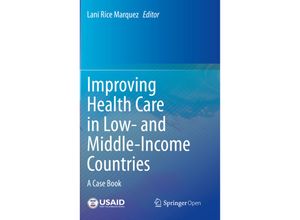This open access book is a collection of 12 case studies capturing decades of experience
improving health care and outcomes in low- and middle-income countries. Each case study is
written by healthcare managers and providers who have implemented health improvement projects
using quality improvement methodology with analysis from global health experts on the
practical application of improvement methods. The book shows how frontline providers in health
and social services can identify gaps in care propose changes to address those gaps and test
the effectiveness of their changes in order to improve health processes and outcomes. The
chapters feature cases that provide real-life examples of the challenges solutions and
benefits of improving healthcare quality and clearly demonstrate for readers what quality
improvement looks like in practice: Addressing Behavior Change in Maternal Neonatal and Child
Health with Quality Improvement and Collaborative Learning Methods in Guatemala Haiti's
National HIV Quality Management Program and the Implementation of an Electronic Medical Record
to Drive Improvement in Patient Care Scaling Up a Quality Improvement Initiative: Lessons from
Chamba District India Promoting Rational Use of Antibiotics in the Kyrgyz Republic
Strengthening Services for Most Vulnerable Children through Quality Improvement Approaches in a
Community Setting: The Case of Bagamoyo District Tanzania Improving HIV Counselling and
Testing in Tuberculosis Service Delivery in Ukraine: Profile of a Pilot Quality Improvement
Team and Its Scale-Up Journey Improving Health Care in Low- and Middle-Income Countries: A Case
Book will find an engaged audience among healthcare providers and administrators implementing
and managing improvement projects at Ministries of Health in low- to middle-income countries.
The book also aims to be a useful reference for government donor agencies their implementing
partners and other high-level decision makers and can be used as a course text in schools of
public health public policy medicine and development. ACKNOWLEDGMENT:This work was conducted
under the USAID Applying Science to Strengthen and Improve Systems (ASSIST) Project USAID
Award No. AID-OAA-A-12-00101 which is made possible by the generous support of the American
people through the U.S. Agency for International Development (USAID). DISCLAIMER:The contents
of this book are the sole responsibility of the Editor(s) and do not necessarily reflect the
views of USAID or the United States Government.

